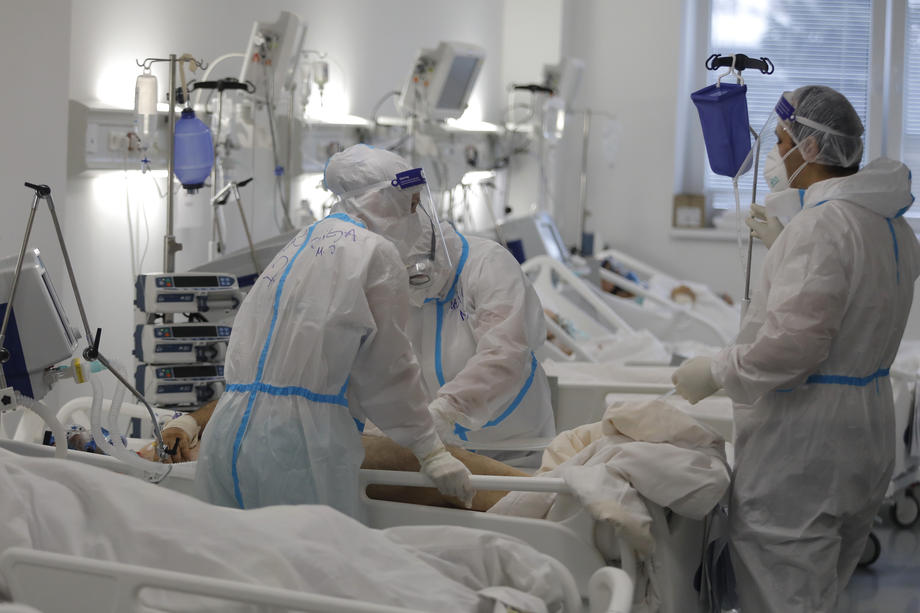The Balkans dealt with the coronavirus relatively stably last year, what happened this year?

Southeast Europe had a relatively stable coronavirus situation last year, and now countries in the region have the highest mortality rates in the world. One of the reasons is the powerful anti-vaccine movements, as well as the skepticism of the citizens.
Hungarian doctors are not optimistic about the upcoming holiday season when it comes to fighting the coronavirus.
The epidemic is raging, hospitals are struggling with a large number of patients. We have 78 deaths a day, that is 1.000 deaths a week. If the numbers continue to grow, we will lose one village a week. "It will be a sad Christmas for many families if we do not slow down the increase in the number of patients," the medical association warned last week.
But the situation in the Balkans on the occasion of the fourth wave did not start everywhere at the same time. Whether the fourth wave of the pandemic, as in Hungary and Slovakia, is only accelerating, or is now at the top as in Slovenia and Croatia or is in a slight decline as in our country and Serbia, it is a fact that most of these countries for weeks are in the dark red zone.
The Balkans also leads in the number of dead. Among the ten countries in the world with the highest number of coronavirus deaths per 100.000 inhabitants are Bulgaria, Bosnia and Herzegovina, Montenegro, Northern Macedonia, Hungary, the Czech Republic and Romania.
If we take into account Georgia, which is on the 8th place on this infamous list, we get the fact that eight of the ten countries with the highest mortality rate in the world are in the area of Eastern and Southeastern Europe.
In the first phase of the epidemic, the Balkans passed relatively unscathed compared to southern European Mediterranean countries such as Italy and Spain. But now the death rate in these countries is relatively low, while the situation in clinics in Bulgaria and Romania is reminiscent of the cataclysmic scenes we saw in Italy last year. writes Zeit.de.
In Romania alone, 10.700 people died from the coronavirus in October, with many calling the Balkan country a "new Lombardy" due to high mortality.
West-east division in vaccination rate
The situation is not much better in Serbia either. The death toll rose to 13,9 percent in 2020, the highest level since World War II. This year it seems that our neighbor will break a new record, and only in October the number of deaths in the Balkans was 80% higher than a year ago, writes Telegraf.rs.
But why is the situation like this now?
One possible answer is to analyze the number of deaths in Romania - about 70 per cent of infected and about 90 per cent of dying patients have not been vaccinated.
The high mortality rate seems to go hand in hand with high levels of vaccination skepticism and low vaccination rates in the Balkans.
Only 22 per cent of Bosnians, 28,9 per cent of Bulgarians, 37,6 per cent of Romanians are fully vaccinated, a significantly lower average than the EU, which is around 70 per cent.
Even in Serbia, with 44,8 per cent and Hungary, 59,7 per cent, vaccinated at the start of the pandemic due to the availability of the Sputnik V and Sinofarm vaccines, that figure is now far below expectations.
A survey by the German Planck Institute found that in October, 54 per cent of respondents in Romania said they definitely did not want to be vaccinated.
Due to the high percentage of people who refuse to be vaccinated, it will now be difficult to achieve collective immunity of the herd through vaccination, the study authors said. They then found that there was great polarization at the eastern and western levels in vaccination readiness.
Vaccine skepticism
Although many will suspect that a lack of vaccines is the reason for the low vaccination rate, this is not the case. Due to the painful experience and history, the percentage of citizens' trust in state institutions in the Balkans is not at an enviable level. Vaccination skepticism is also particularly high in the region, and conspiracy theories are on the rise.
The citizens of these countries, who are accustomed to doubt everything, are also facing strong protests against vaccination, some of which have been intensified by right-wing movements.
From Slovenia to Romania, few could dare to say that the epidemic ended effectively, and the introduction of stricter preventive measures was often introduced too late and with much hesitation.
For example, it was not until November that Hungary managed to reintroduce the mandatory wearing of masks on public transport and indoors. To boast of their own achievements, Budapest suspended the most effective measure for four months and completely ignored the situation in neighboring Romania.
A doctor working at a hospital in Ljubljana said clinics were finding it difficult to cope with the growing number of patients.
The whole system is on the verge of collapse, all this is so sad - said the doctor who wished to remain anonymous.
Hungarian Prime Minister Viktor Orban said the country had enough vaccines not only for the third but also for the fourth dose.
Orban does not want to introduce covid confirmed: The choice is a vaccine or death


